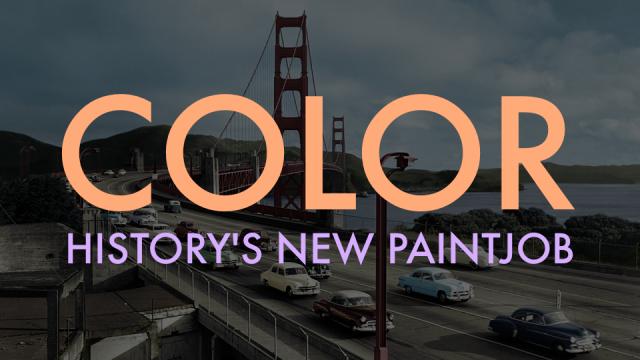There’s been an explosion in the number of colourised photos lately. People find old black-and-white photos online and meticulously add colour to give us a new perspective on history. But one colorised image recently caught my eye after it was tweeted by the notoriously inaccurate HistoryInPics. It’s a stunningly colourful view of the Golden Gate Bridge in 1940, but the photo is a lie.
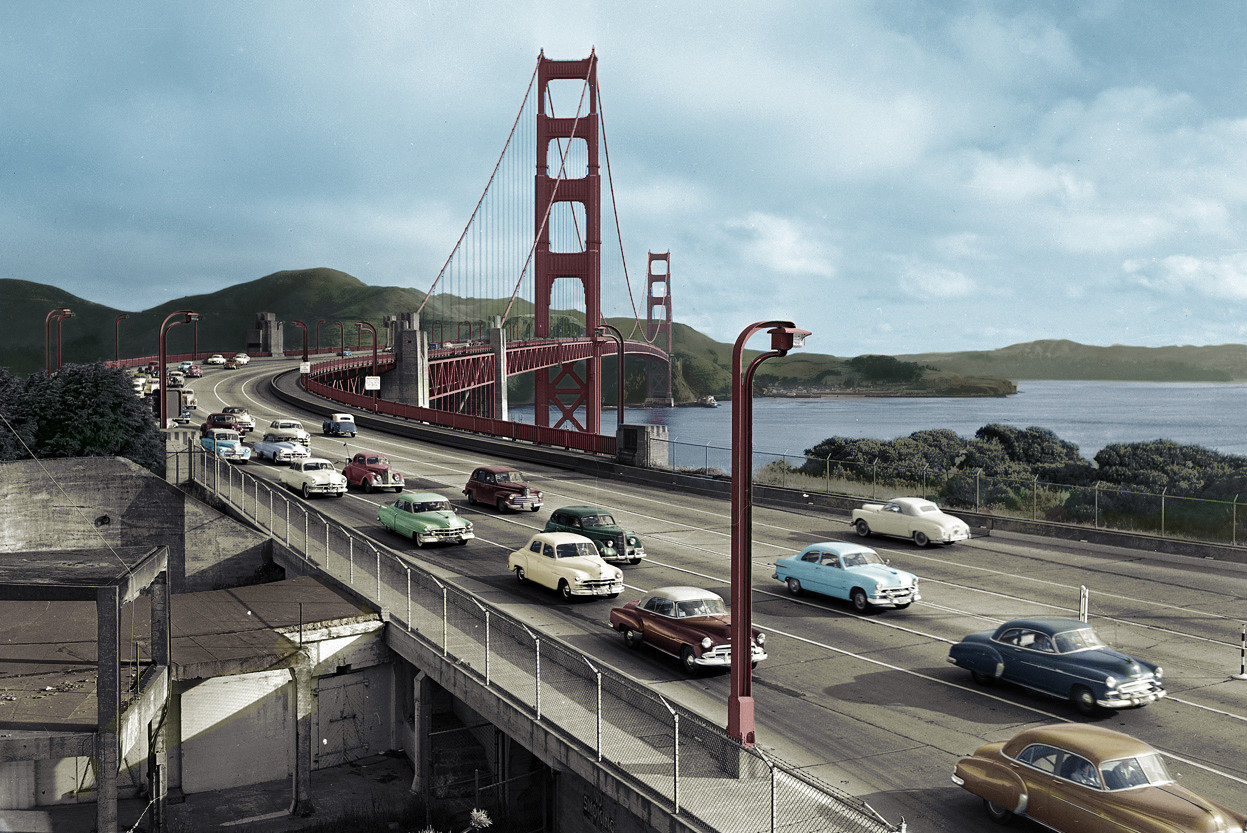
HistoryInPics scraped the image from Dana Keller, a Boston-based artist who just finished his master’s degree in Archival Science. But HistoryInPics never mentions that the photo has been colourised, nor who colorised it. The caption simply reads, “Golden Gate Bridge, 1940” leading us to believe that it’s an “authentic” photo from 1940.
Here’s where things get weirder. The photo isn’t even from 1940, even though the Associated Press lists the original black-and-white photo as having been taken on November 20 of that year. Judging by the makes and models of the cars in the image, it’s way off. As first spotted by commenters at The Atlantic, the photo is more recent by at least a decade.
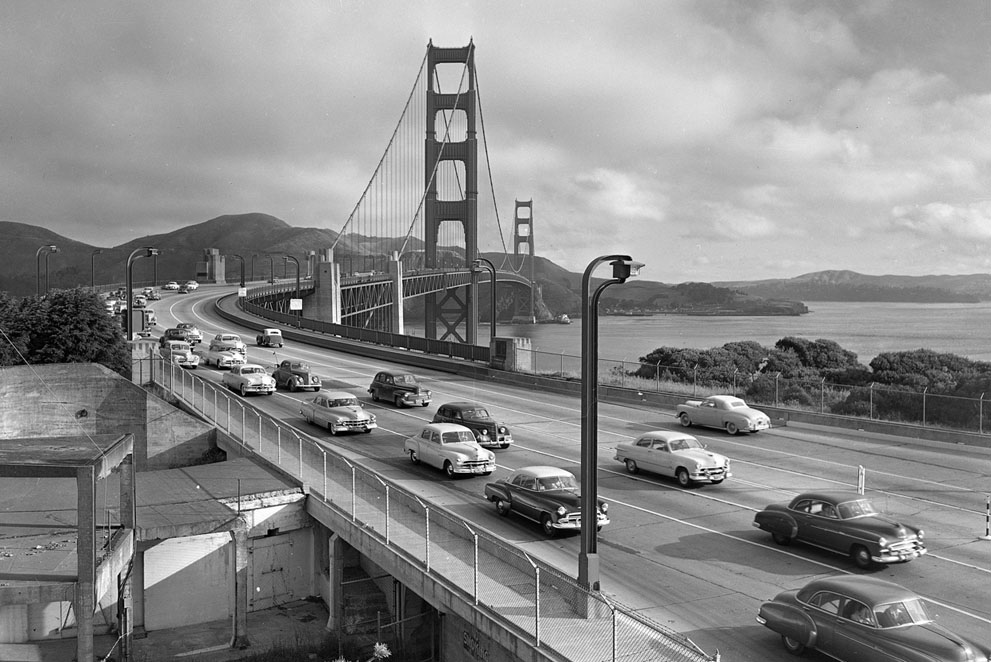
I asked Jalopnik’s own Jason Torchinsky, and he thinks that the photo must be from 1952 or later, given that the maroon car (or, at least the one that’s maroon in the colorised photo) looks most like a 1952 Chevy Bel Air.
Jason even made an image to demonstrate this, explaining that you can kind of “make out the extra grille ‘teeth’ they added in 1952”.
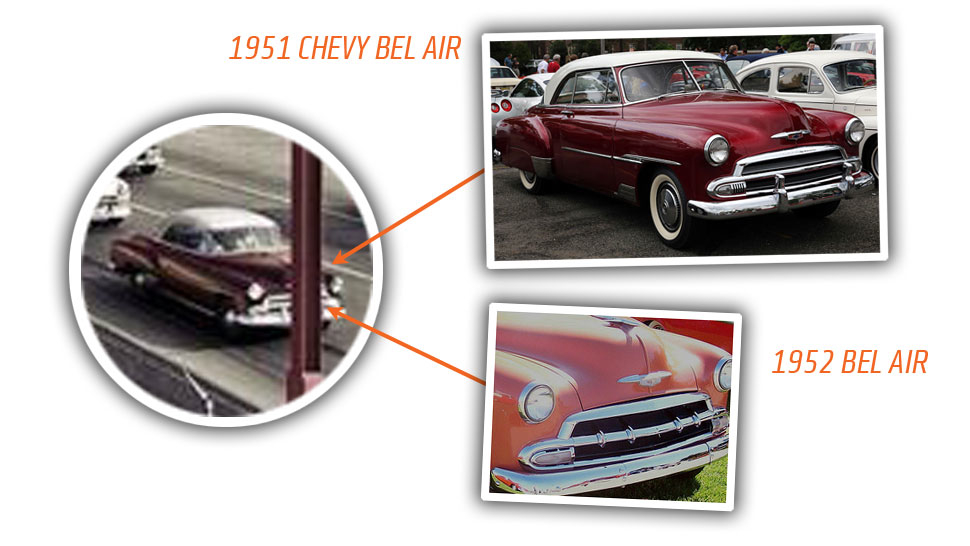
“The bumper guards were options that could have been on any of the years,” Jason said. “I personally think it’s a ’52, but you could argue for ’51.”
Either way, it’s not from 1940. And the photo wasn’t taken in colour.
Why does any of this matter? Putting aside the Associated Press’s error in dating the photo for a moment, I think (and so far, I’m in the minority on this one) that there’s a danger that the colourised photos could become more popular in search engine results than the black-and-white ones.
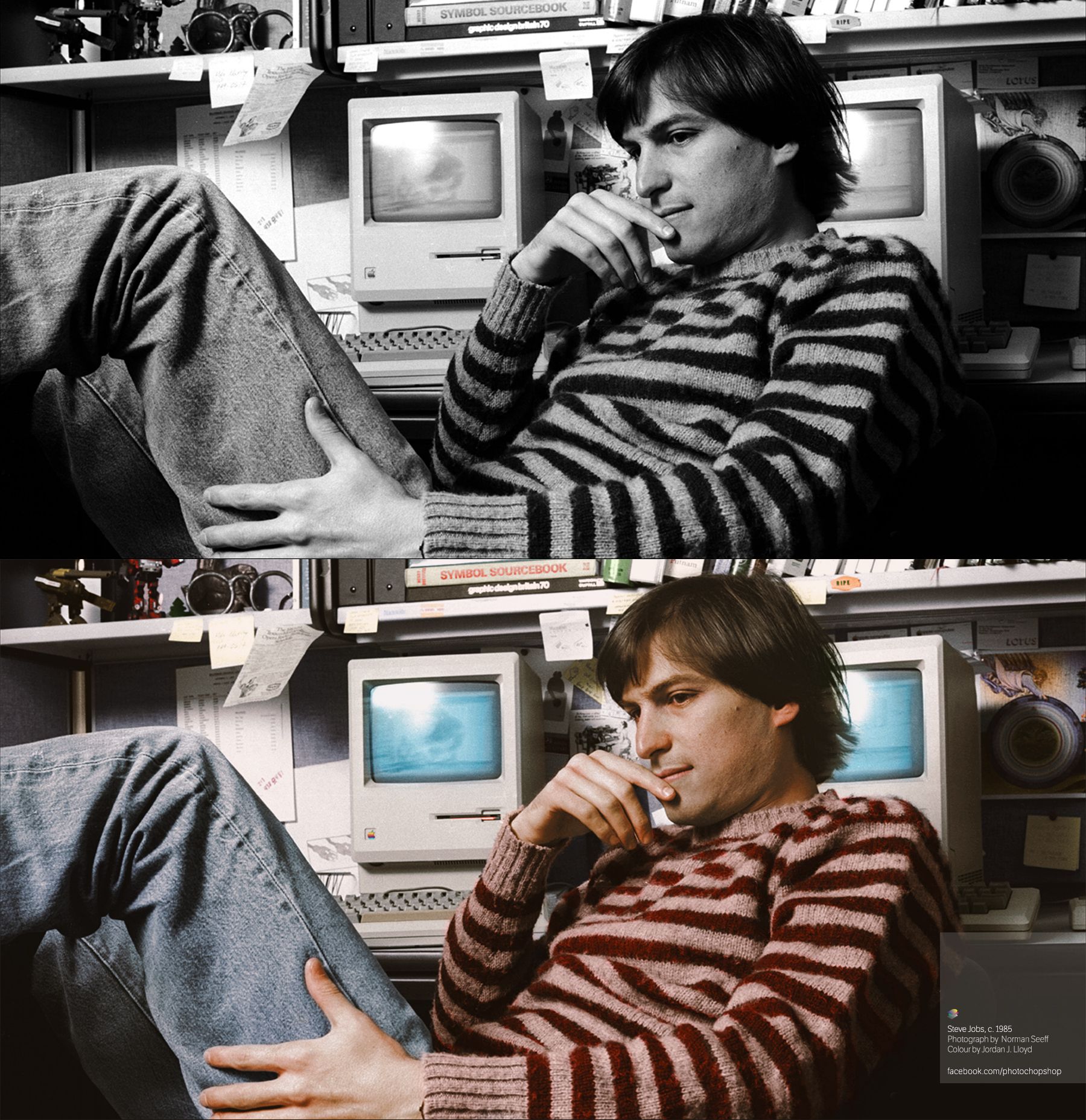
Take the images above, for example. The top image is a photo by Norman Seeff dating back to around 1985. The photo was recently colourised by Jordan J. Lloyd.
“WTF. I didn’t even realise I was on /r/ColorizedHistory. Completely undetectable colouring,” one commenter says about Lloyd’s colorisation of Jobs.
As Lloyd explains in the comments of his Reddit post, he agonised over the colour of the sweater and other such details, as the best colourists do. But who’s to say what the colour of that sweater really was? And what about the books on the shelf or the art on the wall?
Colour images resonate with those of us who grew up during a period when colour photography was the norm — and colour was obviously commonplace in 1985! But Seeff, the original photographer, made the conscious choice to shoot this particular portrait in black-and-white. And what happens if this colourised version becomes more popular than the black-and-white version? Should we care? Does it matter at all to history?
“My only concern would be that nobody should see colour versions as ‘better’ than black and white originals in any way,” Alan Taylor at The Atlantic tells me. “They may seem more relatable, or tickle some part of the brain that itches to fill in the gaps left by monochrome images, but they are definitely alterations — not originals.”
“If a colourised image can spark interest in history, great, I’d hope people would dig deep enough to learn about the challenges of early photography, and how some came to master and take full advantage of contrast and tone to aid in storytelling,” Taylor said.
Errors happen, as we see with the AP’s incorrect date for the Golden Gate Bridge image. But what happens when we start to tinker with old photos in such a way that we’re inserting “errors” like the wrong colour?
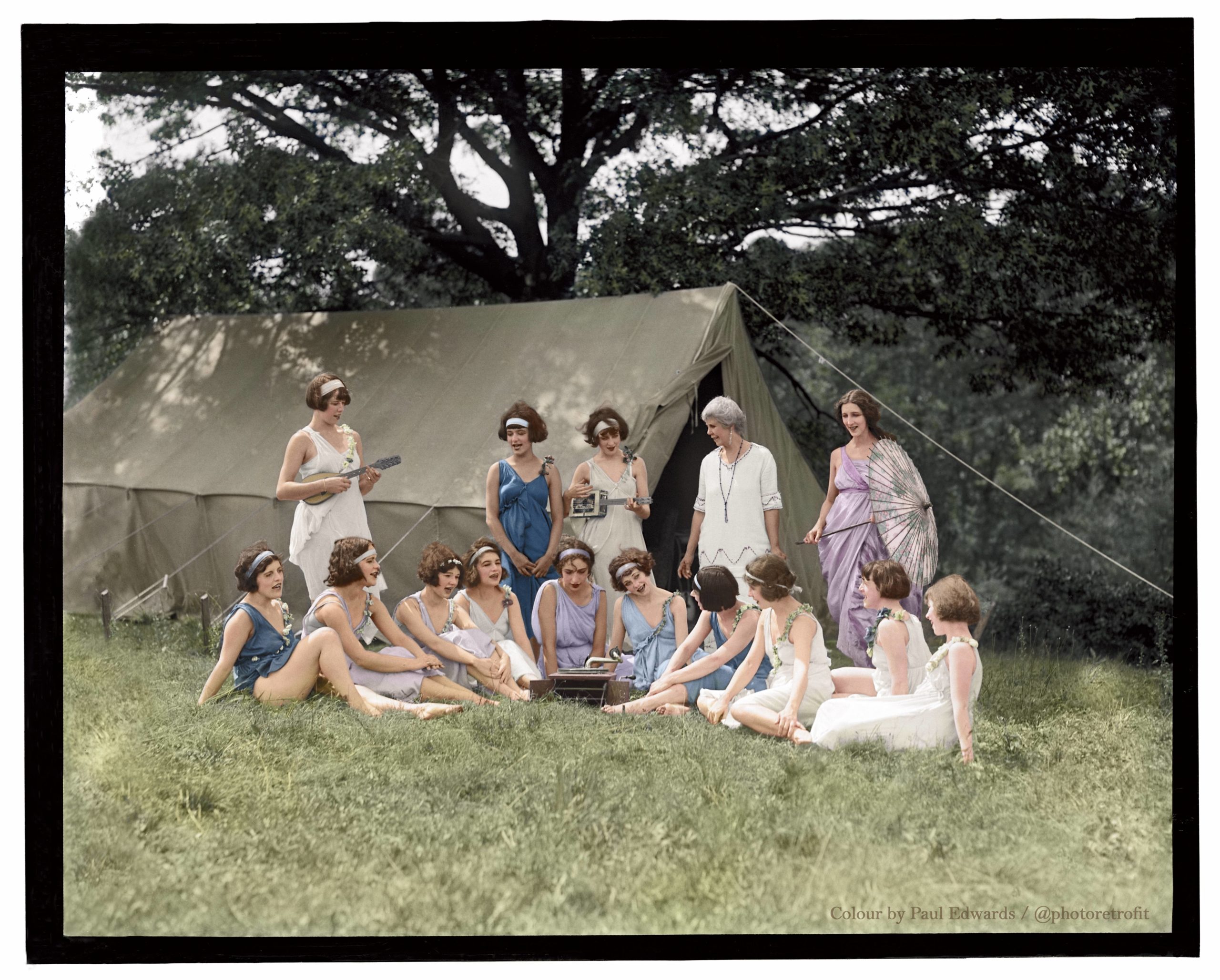
The colorised photo above originally comes from the Library of Congress and depicts ballet dancers in 1924. But Paul Edwards, the person who did the colourisation, doesn’t really know the original colours of what those women are wearing.
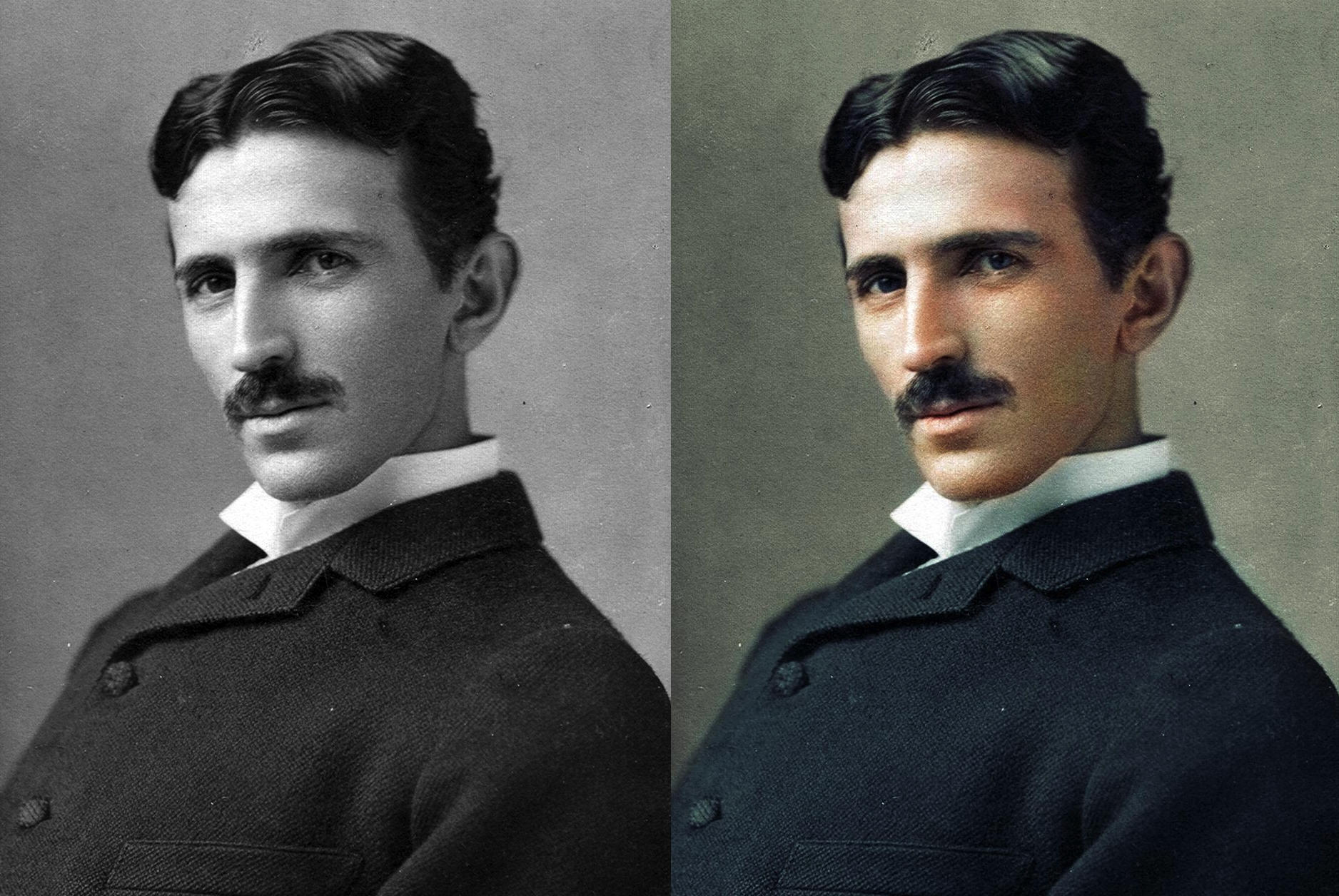
There’s nothing new about photo colourisation. Manual colorisation is nearly as old as photography itself. But here in the early 21st century there does appear to be a desire to colourise all the old photos, now that the digital tools that make it easier are so commonplace.
As we’ve learned time and again, the internet is like that old kids’ game of Telephone. And a particular image or fact can start with one person online and inevitably become more distorted as it gets further down the line. Errors are inserted — sometimes intentionally, sometimes by accident — until it winds up completely distorting our understanding of the original message.
The vast majority of photo colourists probably don’t have deception as a goal. But it seems important to have this discussion now. Especially since some of the largest popularisers of history online (I’m looking at you, @HistoryInPics) have a terrible track record when it comes to providing context for these old images. It’s one thing to remember our history. It’s another to remember it wrong.
Pictures: Photo of the Golden Gate Bridge via the Associated Press with an as-yet undetermined date, colorised by Dana Keller; black-and-white photo of Steve Jobs circa 1985 by Norman Seeff, colorised by Jordan J. Lloyd; dancers of the National American Ballet on 20 August 1924 via Library of Congress, colorised by Paul Edwards; Nikola Tesla photo circa 1885, colorised by Dana Keller
